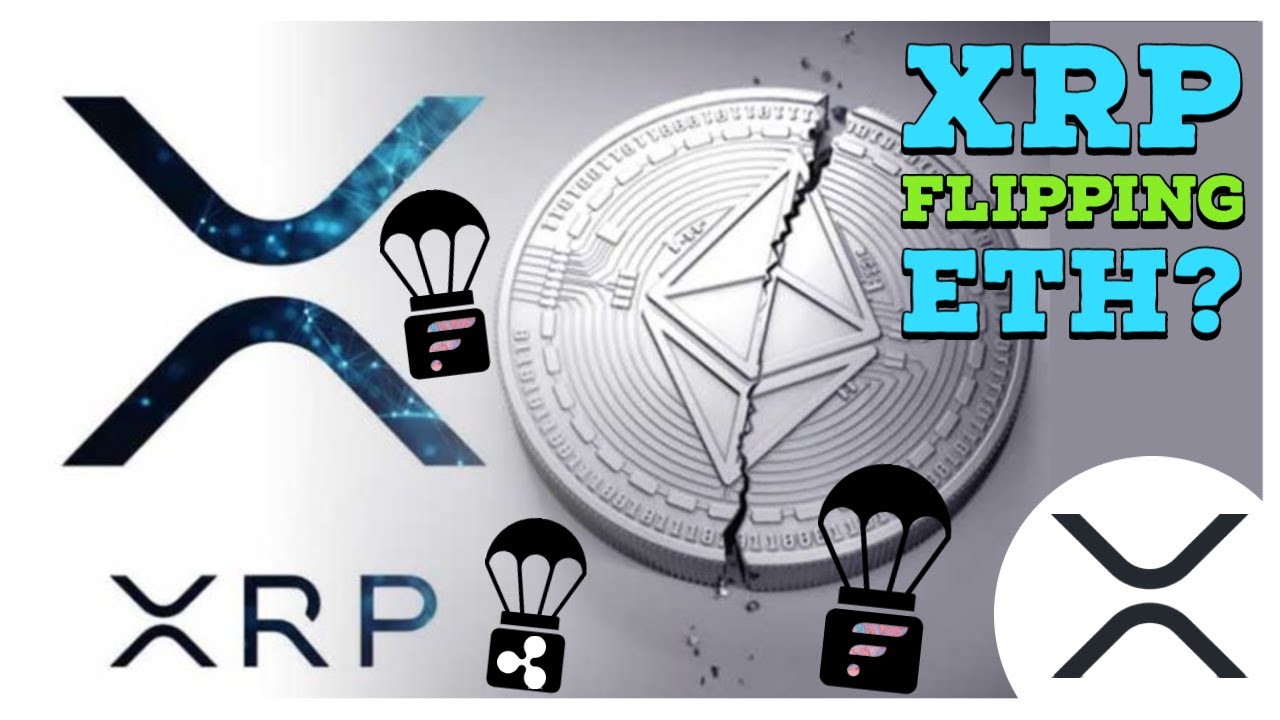Introduction
Welcome to the exciting world of Ethereum, where transactions go far beyond simple transfers of value. In addition to external transactions that involve sending and receiving Ether, there is another type of transaction known as internal transactions. These transactions play a crucial role in the Ethereum network and offer a deeper understanding of the platform’s functionality.
Internal transactions are an integral part of the Ethereum blockchain, allowing for more complex interactions within the ecosystem. Unlike external transactions, which are visible to all participants on the network, internal transactions operate within smart contracts and are primarily used to trigger specific actions or sub-transactions related to a contract’s execution. By enabling intercommunication between different parts of a smart contract, internal transactions enable the creation of decentralized applications (DApps) that can perform complex operations.
The distinction between internal and external transactions is important to grasp. External transactions involve simple transfers of Ether between addresses, while internal transactions happen within the execution of a smart contract. Think of external transactions as the main transactions, while internal transactions are secondary, occurring as a result of contract execution or interactions.
Understanding the role of internal transactions is crucial for developers and enthusiasts interested in building and exploring the Ethereum ecosystem. By diving into the intricacies of internal transactions, we can gain insights into how smart contracts function, the execution of complex operations, and the overall decentralized nature of Ethereum.
In this article, we will delve into the world of internal transactions, exploring their purpose, how they work within the Ethereum network, their significance in smart contracts, and more. Join us on this journey as we unlock the inner workings of Ethereum’s internal transactions and uncover the potential they hold.
Understanding Internal Transactions
Internal transactions are a fundamental concept in Ethereum that involves the communication and interaction between smart contracts. These transactions occur within the context of a specific smart contract and are triggered as a result of the contract’s execution. Unlike external transactions, which are visible on the blockchain and involve the transfer of Ether, internal transactions are not directly visible to outside observers.
Internal transactions can be thought of as sub-transactions within a larger transaction. They are used to perform specific actions or trigger smaller operations within a smart contract. These operations can include updating contract states, performing calculations, executing conditional logic, and interacting with other contracts. By enabling this level of interaction, internal transactions create a dynamic and flexible environment for decentralized applications.
One key aspect of internal transactions is that they do not result in any changes to the account balances or the overall state of the Ethereum network. They are internal to the smart contract and do not involve the movement of Ether between addresses. Instead, the purpose of internal transactions is to facilitate the execution of complex operations and enable the seamless flow of information and actions within the contract.
Another important characteristic of internal transactions is their nested nature. When a smart contract triggers an internal transaction, it can potentially prompt further internal transactions within other contracts as part of the execution process. This creates a network of interconnected transactions, allowing for the complex execution of decentralized applications.
It’s worth mentioning that internal transactions can also be triggered by external transactions. When an external transaction interacts with a smart contract, it can initiate a series of internal transactions within the contract itself. This interplay between external and internal transactions is what enables the execution of sophisticated decentralized applications on the Ethereum network.
In summary, internal transactions are the building blocks of smart contract execution on the Ethereum network. They enable the communication and interaction between different parts of a contract, allowing for the execution of complex operations and the creation of decentralized applications. By understanding the essence of internal transactions, we can appreciate the powerful capabilities of Ethereum and its role in revolutionizing various industries.
Internal Transactions vs External Transactions
When exploring the Ethereum blockchain, it’s important to understand the distinction between internal transactions and external transactions. While both types of transactions play a crucial role in the Ethereum network, they serve different purposes and operate in different contexts.
External transactions are the most common form of transactions on the Ethereum blockchain. These transactions involve the transfer of Ether (ETH) between addresses and are visible to all participants in the network. When sending Ether from one address to another, an external transaction is created, and the details of the transaction are recorded on the blockchain. External transactions are like the transactions we are familiar with in traditional financial systems, where funds are moved between accounts.
On the other hand, internal transactions occur within the execution of a smart contract. They are not visible to external observers, as they are specific to the smart contract being executed. These transactions are used to trigger specific actions or sub-transactions within the smart contract. Instead of transferring Ether between addresses, internal transactions enable the smart contract to perform more complex operations and interact with other contracts.
An important distinction between internal and external transactions is the visibility of the transaction details. While external transactions are visible to anyone on the Ethereum network and can easily be traced, internal transactions are only visible to participants who have access to the specific smart contract being executed. This privacy and restricted visibility of internal transactions provide security and confidentiality for the execution of smart contracts.
Furthermore, external transactions typically involve the movement of Ether and result in changes to the account balances, while internal transactions do not impact the overall state of the Ethereum network or involve the transfer of Ether between addresses. The purpose of internal transactions is to facilitate the execution of specific actions or sub-transactions within the smart contract, which can include updating the contract state or triggering additional internal transactions.
In summary, external transactions deal with the transfer of Ether between addresses and are visible to all participants on the Ethereum network. They are similar to traditional financial transactions but operate within the decentralized structure of Ethereum. Internal transactions, on the other hand, occur within the execution of a smart contract and are not visible externally. They enable smart contracts to perform complex operations and interact with other contracts, facilitating the execution of decentralized applications (DApps).
Why Internal Transactions are Important
Internal transactions play a crucial role in the Ethereum ecosystem and are essential for the execution of smart contracts. While external transactions handle the transfer of value, internal transactions enable the seamless flow of information, trigger specific actions, and facilitate the execution of complex operations within smart contracts. Here are some key reasons why internal transactions are important:
1. Smart Contract Functionality: Internal transactions are vital for the functioning of smart contracts. Smart contracts are self-executing agreements with the terms of the agreement directly written into code. Internal transactions allow for the execution of this code, enabling the contract to perform actions and carry out operations as intended. Without internal transactions, smart contracts would be limited to simple transfers of value and would lack the ability to perform more advanced and sophisticated functions.
2. Decentralized Application Development: Internal transactions are crucial for the development of decentralized applications (DApps). DApps are built on the Ethereum blockchain and rely on smart contracts to function. Internal transactions allow DApps to perform complex tasks, interact with other contracts, and facilitate the seamless flow of information and actions within the application. By leveraging internal transactions, developers can create innovative and powerful decentralized applications that can revolutionize various industries.
3. Contract State Updates: Internal transactions enable smart contracts to update their states based on predefined conditions or user interactions. For example, a decentralized voting application can utilize internal transactions to update the vote count within the contract as users cast their votes. Internal transactions provide a mechanism for the contract to execute and update its state without the need for external intervention or manual updates.
4. Conditional Execution: Internal transactions enable smart contracts to execute different actions based on specific conditions. This allows for the creation of more complex and dynamic applications. Smart contracts can utilize internal transactions to perform conditional checks, such as verifying the eligibility of participants, ensuring the availability of resources, or determining the outcome of specific events.
5. Intercontract Communication: Internal transactions enable smart contracts to communicate and interact with each other. Smart contracts can trigger internal transactions within other contracts, facilitating collaboration and the exchange of information and actions. This capability opens up a wide range of possibilities for decentralized applications, as contracts can work together to achieve common goals, coordinate activities, and create more robust and interconnected systems.
In summary, internal transactions are vital for the execution of smart contracts and the development of decentralized applications. They enable smart contracts to perform complex operations, update their states, execute conditional actions, and communicate with other contracts. By leveraging internal transactions, Ethereum provides the infrastructure for innovative and powerful decentralized applications to flourish.
How Internal Transactions Work on the Ethereum Network
Understanding how internal transactions work on the Ethereum network is essential for grasping the mechanics behind the execution of smart contracts and the seamless flow of information and actions within the network. Here is an overview of how internal transactions operate:
1. Triggering Internal Transactions: Internal transactions are initiated as a result of the execution of a smart contract. When a specific condition or trigger is met within the contract code, an internal transaction is created. This trigger can be a function call within the contract, an event being emitted, or a response to an external transaction interacting with the contract.
2. Execution within the Contract: Once an internal transaction is triggered, the Ethereum Virtual Machine (EVM) processes it within the context of the smart contract. The EVM executes the specific code or instructions associated with the internal transaction, carrying out the desired actions specified within the contract.
3. Updating Contract State: Internal transactions can update the state of the smart contract. The state of a contract includes variables, data structures, and other parameters defined within the contract code. Through internal transactions, the contract can modify its state based on the execution of specific actions or conditions. These state changes are recorded on the blockchain and serve as the updated version of the contract’s data.
4. Further Internal Transactions: Within the execution of a smart contract, internal transactions can trigger additional internal transactions. This nesting of internal transactions allows for the execution of more complex operations and enables the contract to interact with different parts of its code or other contracts on the Ethereum network. This recursive nature of internal transactions enables the development of intricate decentralized applications.
5. Gas Consumption: Similar to external transactions, internal transactions also consume gas on the Ethereum network. Gas is a unit of measurement that represents the computational effort required to execute a transaction or contract. Each operation within an internal transaction consumes a certain amount of gas, which must be paid in Ether to the network. The gas limit determines the maximum amount of computational work that can be done within an internal transaction.
6. Interaction with External Transactions: Internal transactions can also interact with external transactions. When an external transaction interacts with a smart contract, it can trigger a series of internal transactions within the contract itself. This interaction between internal and external transactions allows for the seamless integration of on-chain and off-chain operations, enabling developers to build more robust and versatile applications.
In summary, internal transactions are triggered within the execution of a smart contract and enable the seamless flow of information and actions within the Ethereum network. By updating the contract state, interacting with other contracts, and consuming gas, internal transactions provide the foundation for the execution of complex operations and the development of decentralized applications.
The Role of Internal Transactions in Smart Contracts
Internal transactions play a vital role in the functionality and execution of smart contracts. They serve as the backbone of smart contract interactions and enable the creation of decentralized applications (DApps) on the Ethereum network. Here are some key roles that internal transactions fulfill within smart contracts:
1. Communication between Smart Contract Components: Internal transactions facilitate communication and interaction between different components of a smart contract. By triggering specific actions or sub-transactions within the contract, internal transactions enable different parts of the contract to work together seamlessly. This allows for the coordination of complex operations and ensures the proper functioning of the contract as a whole.
2. Execution of Complex Operations: Smart contracts often require more than simple transfers of value. They may involve complex operations, conditional logic, and calculations. Internal transactions enable the execution of these intricate operations, allowing smart contracts to perform more advanced functions, such as voting, auctions, decentralized exchanges, and more. By leveraging internal transactions, developers can build powerful and versatile DApps on the Ethereum network.
3. Facilitation of Contract State Updates: Internal transactions are responsible for updating the state of a smart contract. The state of a contract includes variables, data structures, and other parameters that define its current state. By triggering internal transactions, the contract can modify its state based on specific conditions, user interactions, or other factors. These state updates are crucial for the proper functioning of the contract and enable it to adapt to changing circumstances.
4. Gas Management: Internal transactions, like external transactions, consume gas on the Ethereum network. Gas is a measure of computational work required to execute a transaction or contract. Each operation within an internal transaction consumes a certain amount of gas, which must be paid in Ether to the network. Proper gas management is crucial to ensure the successful execution of smart contracts, and internal transactions play a key role in managing and optimizing gas usage.
5. Intercontract Communication: Smart contracts often need to interact with other contracts on the Ethereum network. Internal transactions enable this intercontract communication by triggering specific actions or sub-transactions within other contracts. This seamless integration between contracts allows for the creation of interconnected DApps, where different contracts collaborate to achieve common goals, share data, and coordinate activities. Internal transactions provide the mechanism for contracts to work together in a decentralized and trustless manner.
In summary, the role of internal transactions in smart contracts is multi-faceted. They facilitate communication between different components of a contract, enable the execution of complex operations, update the contract state, manage gas consumption, and enable intercontract communication. By serving these roles, internal transactions empower developers to build powerful and sophisticated applications on the Ethereum network.
Examples of Internal Transactions
Internal transactions within the Ethereum network are used in various scenarios, showcasing their versatility and flexibility. Here, we explore a few examples of how internal transactions are employed within smart contracts:
1. Decentralized Exchanges (DEX): Internal transactions play a crucial role in decentralized exchanges. When a user places an order to buy or sell a token, an internal transaction is triggered within the exchange’s smart contract. This internal transaction updates the user’s balance and executes the trade by interacting with other contracts, such as token contracts and liquidity pools. Internal transactions facilitate the seamless execution of trades, ensuring that transactions are secure, transparent, and trustless.
2. Voting Systems: Internal transactions are used in voting systems to tally votes and determine the outcome of an election. When voters cast their votes, an internal transaction is triggered within the voting contract, updating the vote count and ensuring that each voter can only vote once. The voting contract can also use internal transactions to validate voter eligibility and enforce any conditional rules defined in the contract.
3. Gaming and Collectibles: Internal transactions are employed in gaming and collectible applications built on the Ethereum blockchain. For instance, when a player completes a level in a game, an internal transaction is triggered within the game’s smart contract, updating the player’s score, distributing rewards, and allowing the player to progress to the next level. Similarly, for collectible applications, internal transactions are utilized to transfer ownership of unique digital assets (such as non-fungible tokens or NFTs) from one address to another, keeping track of ownership history.
4. Token Swaps and DeFi Protocols: Internal transactions are fundamental to token swaps and decentralized finance (DeFi) protocols. For example, when a user interacts with a decentralized lending protocol, an internal transaction is triggered to borrow or lend tokens, update balances, and execute interest calculations. Internal transactions are also used in automated market makers (AMMs) like Uniswap, where users can swap one token for another. This involves triggering internal transactions within the AMM’s smart contract to update token balances, compute liquidity ratios, and enforce price slippage protections.
5. Chainlink Oracles: Internal transactions are utilized within decentralized oracle networks, such as Chainlink, to fetch external data and deliver it to smart contracts. When a smart contract requests data from an oracle, an internal transaction is triggered within the oracle’s contract, initiating the data-fetching process. Internal transactions are used to securely transmit the requested data back to the smart contract, facilitating trustless interaction between the blockchain and real-world data sources.
These examples illustrate the diverse range of applications that leverage internal transactions within smart contracts. Whether it’s decentralized exchanges, voting systems, gaming, DeFi protocols, or oracle networks, internal transactions are essential for executing complex operations, ensuring data integrity, and enabling secure interactions on the Ethereum network.
Benefits and Limitations of Internal Transactions
Internal transactions offer several benefits in the Ethereum ecosystem, enabling the execution of complex operations and facilitating the development of decentralized applications. However, they are not without their limitations. Let’s explore the benefits and limitations of internal transactions:
Benefits:
1. Enhanced Functionality: Internal transactions greatly enhance the functionality of smart contracts. By allowing for the execution of complex operations and the seamless flow of information, internal transactions enable the creation of decentralized applications with advanced features and capabilities.
2. Intercontract Communication: Internal transactions enable smart contracts to communicate and interact with each other. This facilitates the building of interconnected decentralized applications, where contracts can collaborate and share information, creating a more robust and versatile ecosystem.
3. Granular Control: Internal transactions provide granular control within smart contracts, allowing for conditional execution and precise updates to the contract state. This level of control enables developers to build more efficient and secure applications with built-in checks and balances.
4. Privacy and Confidentiality: Internal transactions are not visible outside of the specific smart contract being executed. This provides a level of privacy and confidentiality, as the internal transactions and their associated details are only accessible to the participants involved in that particular contract.
Limitations:
1. Lack of Visibility: While internal transactions offer privacy, their lack of visibility outside of the smart contract can also present challenges. It becomes difficult to track and monitor the flow of information and actions between contracts, potentially making auditing and debugging more complex.
2. Complexity: Internal transactions can add complexity to smart contract development. Understanding the flow of information and the triggers for internal transactions requires thorough knowledge of the contract’s code and its execution logic, which can increase the development and maintenance overhead.
3. Gas Costs: Like external transactions, internal transactions consume gas on the Ethereum network. Executing complex operations can result in higher gas costs, potentially making smart contracts more expensive to use or deploy. This must be taken into consideration during the design and optimization of smart contracts.
4. Potential Security Risks: Improper handling of internal transactions can introduce security risks. Solid understanding of contract architecture and careful management of permissions and access controls are crucial to mitigate the potential for vulnerabilities and unwanted behavior within the smart contract.
In summary, internal transactions provide enhanced functionality and flexibility within smart contracts. They enable intercontract communication, offer granular control, and provide privacy benefits. However, they also introduce challenges, such as limited visibility, complexity, gas costs, and potential security risks. With careful design, development, and optimization, the benefits of internal transactions can be harnessed while mitigating the associated limitations.
How to View Internal Transactions on the Ethereum Blockchain
Viewing internal transactions on the Ethereum blockchain can provide valuable insights into the execution and interactions of smart contracts. While internal transactions are not directly visible on blockchain explorers like external transactions, there are alternative methods to access this information. Here’s how you can view internal transactions on the Ethereum blockchain:
1. Use Etherscan: Etherscan is one of the most popular blockchain explorers for Ethereum. It allows users to view and analyze detailed information about transactions and contracts on the Ethereum network. To view internal transactions using Etherscan, you can follow these steps:
- Go to the Etherscan website (https://etherscan.io/) and enter the address of the smart contract you are interested in.
- Navigate to the contract’s page and look for the “Internal Txns” or “Internal Transactions” tab.
- Click on the tab to access the list of internal transactions associated with the contract.
- From there, you can view details such as the transaction hash, the sender and receiver addresses (if applicable), and any additional data or events associated with the internal transaction.
2. Use Block Explorers with API Access: Some block explorers offer API access to retrieve internal transaction data programmatically. By leveraging APIs, you can retrieve and process internal transaction information in a more automated and efficient manner. You can check the documentation of block explorers like Etherscan, or consider using dedicated Ethereum APIs like Infura or Alchemy to access internal transaction data.
3. Use Web3 Providers and Libraries: Web3 providers and libraries, such as Web3.js or ethers.js, can be utilized to interact with the Ethereum network directly. These libraries provide methods to access and decode internal transaction data programmatically. By using appropriate functions and filters, you can retrieve internal transaction information based on specific criteria, such as contract address or transaction hash.
4. Use Ethereum Development Tools: Ethereum development tools like Truffle or Hardhat can also assist in viewing internal transactions. These tools offer functionalities for deploying and interacting with smart contracts, and they often provide built-in utilities for retrieving internal transaction information during testing and development phases.
It’s important to note that while these methods provide access to internal transaction data, the level of detail and the availability of information may vary depending on the visibility and accessibility of the smart contract you are interested in. Additionally, some internal transactions may be encoded or encrypted, requiring further analysis or decoding to understand their content.
In summary, viewing internal transactions on the Ethereum blockchain involves utilizing blockchain explorers like Etherscan, accessing API-based solutions, leveraging Web3 libraries, or utilizing Ethereum development tools. These approaches enable users to explore and gain insights into the internal transactions occurring within smart contracts on the Ethereum network.
Conclusion
The world of Ethereum is powered not only by external transactions but also by the intricate web of internal transactions. These transactions play a crucial role in the execution of smart contracts, enabling complex operations, intercontract communication, and the creation of decentralized applications.
Internal transactions enhance the functionality of smart contracts, allowing for conditional execution, state updates, and granular control. They facilitate the seamless flow of information and actions within the Ethereum network, enabling contracts to work together and achieve common goals.
Throughout this article, we have explored the various aspects of internal transactions, such as their purpose, how they work within the Ethereum network, their significance in smart contracts, and some practical examples. We have also discussed the benefits they offer, including enhanced functionality, intercontract communication, granular control, and privacy.
However, it is important to recognize the limitations of internal transactions. These include limited visibility, complexity, gas costs, and potential security risks. By understanding these limitations, developers can design and optimize smart contracts to mitigate any associated challenges.
To view internal transactions on the Ethereum blockchain, users can leverage blockchain explorers like Etherscan, access APIs, use Web3 libraries, or utilize Ethereum development tools. These methods provide valuable insights into the execution and interactions of smart contracts, contributing to a better understanding of the Ethereum ecosystem.
In conclusion, internal transactions are the building blocks of Ethereum’s decentralized infrastructure. They enable the execution of complex operations, the development of sophisticated decentralized applications, and the seamless flow of information within the network. By leveraging the power of internal transactions, Ethereum continues to revolutionize various industries and pave the way for a decentralized future.

























